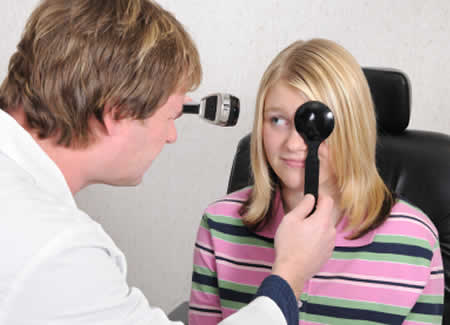
One of the most demanding problems for a parent comes when their child is prescribed glasses. Ensuring that your child wears specs can be challenging, particularly during the school day when they’re likely to need the help their glasses will give. With that in mind, it’s a surprise that more parents are not encouraging their youngsters to try contact lens wear.
The question many will ask, of course, is are contact lenses safe for my child? And the answer, overwhelmingly, is yes. Research shows that children of all ages can benefit greatly from wearing both soft and hard contact lenses.
The most important factor for parents to consider is whether their child is mature enough to want to wear contacts – and mature enough to follow the instructions from the eye doctor on putting them in and taking them out, while maintaining high standards of hygiene. If your child requires prescription glasses and finds the wearing of them troublesome, it might be time for both of you to consider the alternative and try contacts.
Children, particularly those approaching or in their teens, are notoriously self-conscious, often with fragile self-esteem. Even something as innocuous as having to wear spectacles can be a blow to their self-confidence – and any adult who wore glasses as a kid who can recall schoolyard taunts and name-calling will sympathize.
There are other advantages to wearing contacts, no matter what age you are. They include:
- Better all-round vision – wearing spectacles leads to inevitable “blind” spots where lenses will provide better peripheral vision;
- Greater convenience, particularly when it comes to taking part in sports and other physical activities;
- May be cheaper in the longer run as there are no expensive spectacles for your child to lose or break;
- Changes in your child’s eyesight can be dealt with quickly without having to wait for new glasses;
- Lenses can correct vision for the longer term, particularly in cases of a child with a squint or “lazy” eye, by providing the right vision in the troublesome eye;
- Recent research also suggests wearing contacts from a young age can slow the progress of near-sightedness in youngsters, although more studies are underway.
A consultation with your eye doctor will establish if contact lenses are right for your child and the doctor can also provide reassurance that wearing lenses is indeed safe for children.
The next decision is on which type of lenses will work best for your youngster. Again, this decision will depend on how active your child is, how much you can trust them to take care of the lenses and their hygiene; and how much you are willing to spend on contacts.
While there are other options, such as rigid gas-permeable lenses (RGP), one of the most popular choices today is daily disposable soft lenses. For single use only, these lenses don’t need any expensive solutions, are easy to insert and remove, and are simply discarded after single use.
However, daily disposables can be expensive, particularly if your child needs to wear contacts every day. Silicone hydrogel contacts are a healthier choice that can be worn for a longer period.
Another alternative is ortho-K, or orthokeratology lenses. These are RGP lenses that are worn overnight and are shown to correct near-sightedness in children by reshaping the cornea. Having worn the lenses at night, the child can then see clearly during the day without having to wear glasses or other contacts.
And finally, what about color contacts? Like clear contacts, colors are also safe to wear under the guidance of an eye care practitioner. Freshlook, the most popular brand worldwide for prescription color contacts, has eleven different shades to choose from. Have a look at all the color choices here.
The medical advice is clear – contact lenses are safe for children to wear and, in many cases, are the ideal choice to boost self-esteem, encourage a child to take responsibility for him or herself, and improve their vision.
More topics
Improving Sport Performance with Contact Lenses
7 Things Teens Need to Know about Contact Lenses